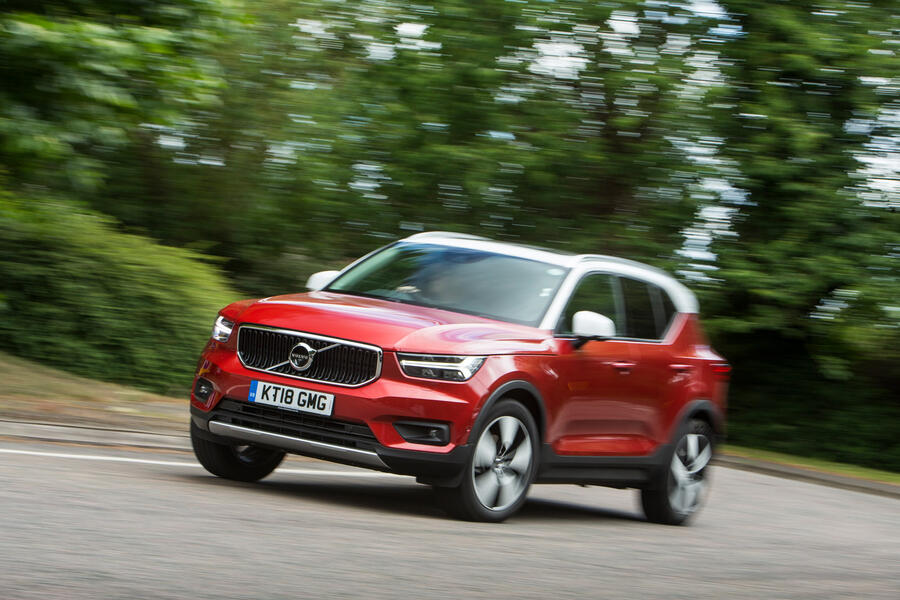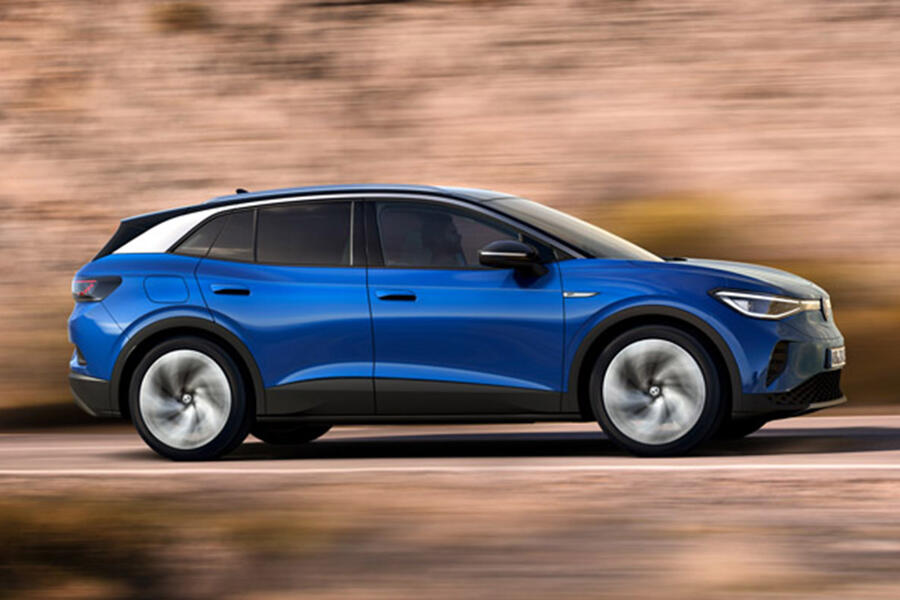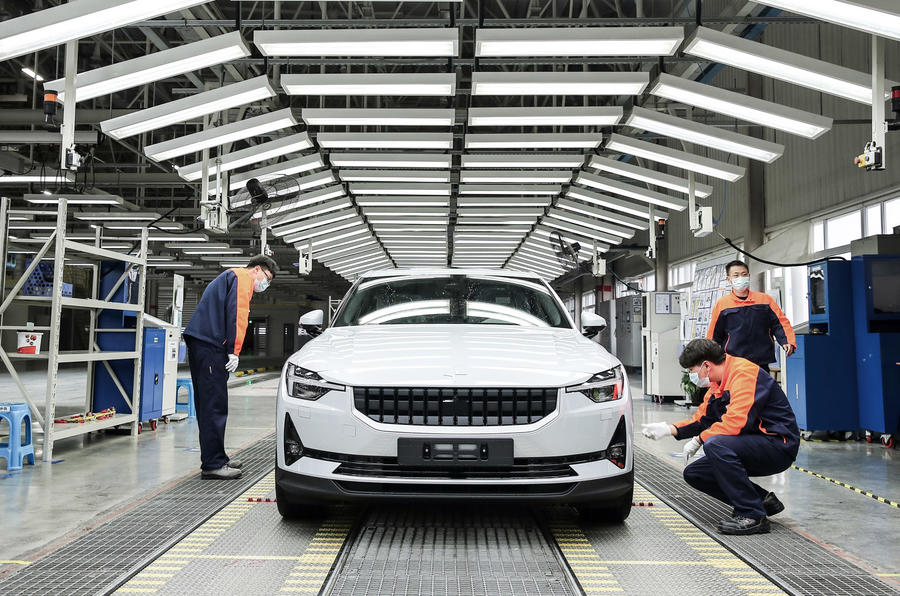 Electric car maker has published real-world CO2 figures for its 2 SUV versus a petrol XC40
Electric car maker has published real-world CO2 figures for its 2 SUV versus a petrol XC40
Polestar, Volvo’s EV spin-off brand, has detailed the lifetime climate impact of its new 2 fastback – claiming it’s “spearheading a movement for transparency throughout the automotive industry”.
As well as detailing the energy and CO2 produced in the manufacture of the 2 compared with a petrol-engined Volvo XC40, Polestar said it is planning to reveal more about the wider environmental impact of building electric vehicles.
Company boss Thomas Ingenlath said: “Car manufacturers have not been clear in the past with consumers on the environmental impact of their products. That’s not good enough. We need to be honest, even if it makes for uncomfortable reading.”
The firm’s analysis showed the 2 has a lower environmental impact over its lifetime than a petrol-engined XC40, but it also stated that “going green isn’t quite as simple as just buying an electric car”.
It added: “It’s tempting to assume that we can achieve a sustainable and emission-free future by simply getting everyone to drive electric cars. But the truth is a lot more complicated.”
Polestar says manufacturing a 2 creates 24 tonnes of CO2e (CO2 equivalents), compared with just 14 tonnes of CO2e to make a petrol-engined XC40. This extra CO2 is largely attributable to the production of the battery pack needed for the EV. Depending on the source of power used to charge the Polestar during its lifetime, the EV will eventually offset the XC40’s lower manufacturing CO2 footprint, becoming the ‘greener’ of the two cars.
There has been considerable controversy in the automotive industry about the ‘embedded energy’ in battery packs, with claims that manufacturing large batteries particularly results in a ‘carbon footprint’ that makes nonsense of claims that EVs are the energy-efficient future of motoring.
Over a lifetime of 200,000 kilometres, Polestar says, the XC40 (a petrol version rated at 163g/km of CO2) releases another 41 tonnes of CO2 through the use of fossil fuels, which is where the 2 EV starts to gain its advantage. Even so, the low-CO2 mileage required for the 2 to negate its greater production CO2e is much higher than you might imagine.
In an ideal world, with the Polestar charged using entirely renewable wind power, a driver would still need to travel 50,000 kilometres before the EV’s carbon footprint becomes smaller than the petrol XC40’s. This wind-powered scenario would involve just 0.4 tonnes of carbon being released over 200,000 kilometres of travel.
If the 2 is charged from what Polestar calls the ‘European grid’ – the average electricity mix across 28 countries – the EV has to travel 80,000 kilometres before its lifetime carbon footprint is lower than the petrol XC40’s.
Clearly, the mix of wind and nuclear power across Europe significantly helps to reduce the CO2 load when recharging an EV. Polestar’s calculations, based on the average global energy mix, show it would take 110,000 kilometres before the 2 had a CO2 advantage over the petrol XC40.

The Polestar report considered only CO2 emissions from the XC40, saying “methane and nitrous oxide emissions (CH4 and N2O) are not included [because they] contribute to only a minor fraction of the total tailpipe GHG [greenhouse gas] emissions from a petrol car”. That highlights just how clean a modern petrol engine can be in terms of air pollution.
Polestar isn’t limiting its examination of the EV business to just a carbon lifecycle calculation, noting that ethical battery manufacturing is also key. The firm said: “We work hard to ensure that the minerals we use in our batteries are mined responsibly, paying full respect to human rights and creating minimal pollution.”
As with related firm Volvo, Polestar is using technology to track cobalt through its supply chain to check the methods by which it’s mined.
The Chinese-owned Swedish brand is laying down a serious challenge to rival EV makers, not just in terms of revealing the energy used to make battery packs but also in promising future transparency in relation to mineral mining.
In a premium market space that trades almost entirely on environmental credentials, Polestar’s transparency pitch could give the brand a decisive advantage over rival car makers that cannot, or perhaps will not, release similarly detailed audits.
VW’s CO2 claims for ID 3 and ID 4

Volkswagen says production of both it’s ID 3 and new ID 4 electric cars is effectively carbon-neutral, because of a huge investment in its special Zwickau factory, where both models are made.
The German plant is powered entirely by hydroelectric, wind and solar power, heating from the on-site powerplant is provided by natural gas and VW says it has minimised energy consumption in key areas.
But there’s a difference between ‘carbon-neutral’ production and ‘zero-carbon’ production, and VW notes that with the ID 3 and ID 4, it “compensates for unavoidable emissions through climate protection projects”.
As with the Polestar 2, the lifetime carbon footprint of VW’s ID models depends on where the power comes from to charge them, with the firm claiming they’re ‘net-CO2-neutral’ if powered entirely by renewable energy.
Hilton Holloway




 Electric car maker has published real-world CO2 figures for its 2 SUV versus a petrol XC40
Electric car maker has published real-world CO2 figures for its 2 SUV versus a petrol XC40